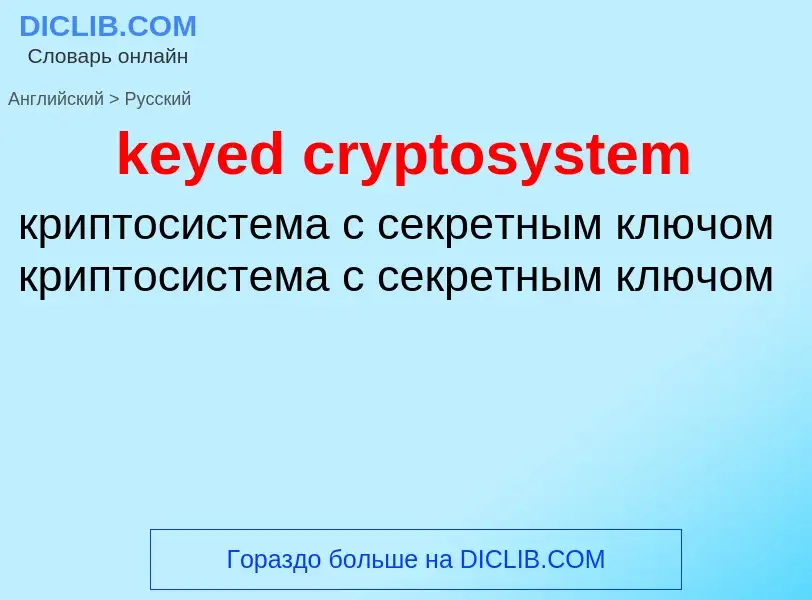Translation and analysis of words by ChatGPT artificial intelligence
On this page you can get a detailed analysis of a word or phrase, produced by the best artificial intelligence technology to date:
- how the word is used
- frequency of use
- it is used more often in oral or written speech
- word translation options
- usage examples (several phrases with translation)
- etymology
keyed cryptosystem - translation to russian
Definition
Wikipedia
The Damgård–Jurik cryptosystem is a generalization of the Paillier cryptosystem. It uses computations modulo where is an RSA modulus and a (positive) natural number. Paillier's scheme is the special case with . The order (Euler's totient function) of can be divided by . Moreover, can be written as the direct product of . is cyclic and of order , while is isomorphic to . For encryption, the message is transformed into the corresponding coset of the factor group and the security of the scheme relies on the difficulty of distinguishing random elements in different cosets of . It is semantically secure if it is hard to decide if two given elements are in the same coset. Like Paillier, the security of Damgård–Jurik can be proven under the decisional composite residuosity assumption.

![[[Adi Shamir]], co-inventor of RSA (the others are [[Ron Rivest]] and [[Leonard Adleman]]) [[Adi Shamir]], co-inventor of RSA (the others are [[Ron Rivest]] and [[Leonard Adleman]])](https://commons.wikimedia.org/wiki/Special:FilePath/Adi Shamir 2009 crop.jpg?width=200)
